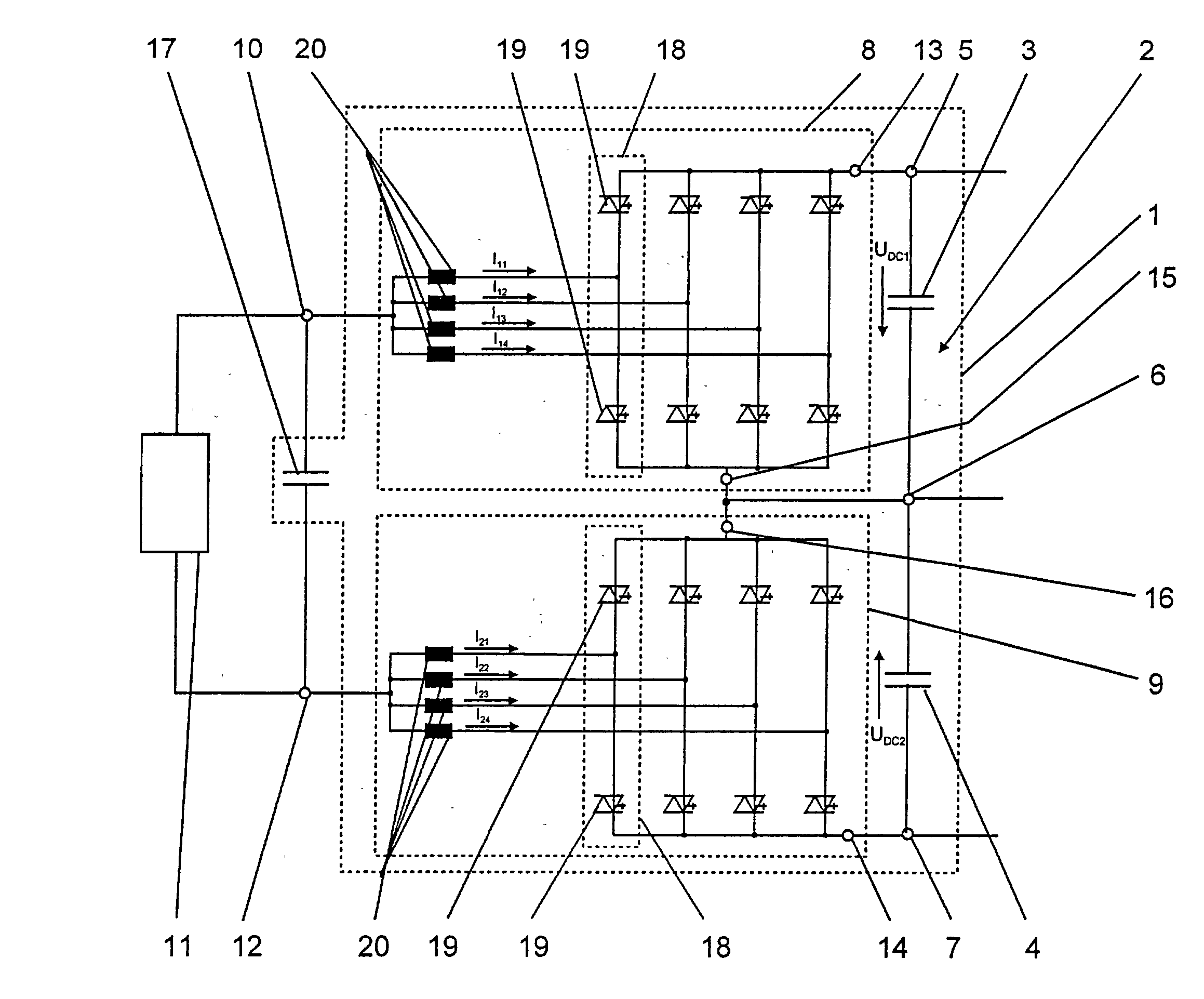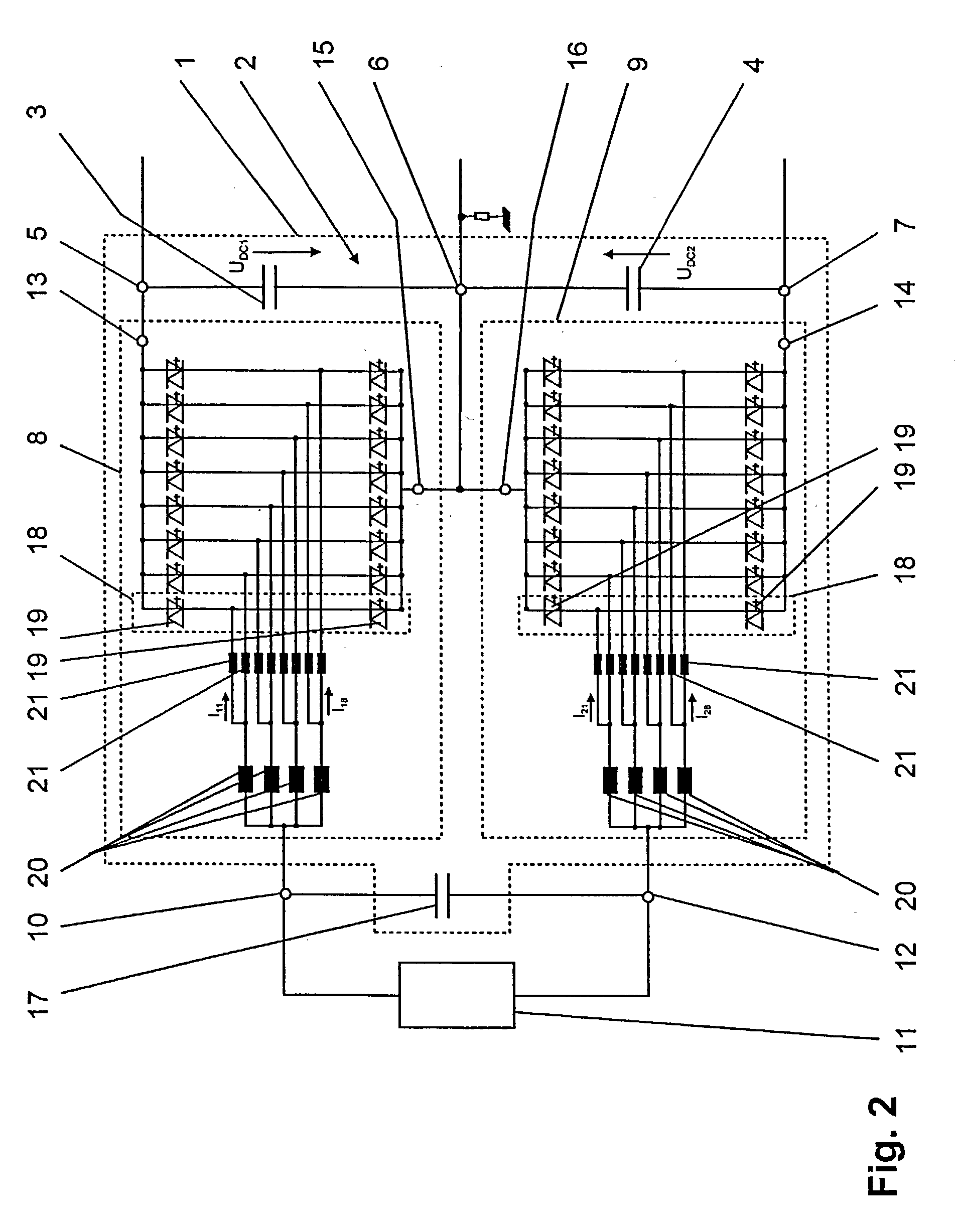Converter circuit arrangement, as well as a method for matching a variable DC voltage
a converter circuit and voltage matching technology, applied in the field of power electronics, can solve the problems of only a major level of circuit complexity, and considerable costs
- Summary
- Abstract
- Description
- Claims
- Application Information
AI Technical Summary
Benefits of technology
Problems solved by technology
Method used
Image
Examples
first embodiment
[0011] FIG. 1 shows a converter circuit arrangement according to the invention,
second embodiment
[0012] FIG. 2 shows a converter circuit arrangement according to the invention, and
[0013] FIG. 3 shows an embodiment of a drive circuit of a converter circuit arrangement according to the invention.
[0014] The reference symbols used in the drawing and their meanings are listed in summarized form in the list of reference symbols. In principle, identical parts are provided with the same reference symbols and figures. The described embodiments represent examples of the subject matter of the invention and have no restrictive effect.
[0015] Approaches to Implementation of the Invention
[0016] FIG. 1 shows a first embodiment of a converter circuit arrangement 1 according to the invention for matching a variable DC voltage. The converter circuit arrangement 1 comprises a drive circuit 28 for producing drive signals S.sub.11 . . . S.sub.1n; S.sub.21 . . . S.sub.2n, and one embodiment of such a drive circuit 28 is illustrated in FIG. 3 and will be described later. Furthermore, the converter cir...
PUM
 Login to View More
Login to View More Abstract
Description
Claims
Application Information
 Login to View More
Login to View More - R&D
- Intellectual Property
- Life Sciences
- Materials
- Tech Scout
- Unparalleled Data Quality
- Higher Quality Content
- 60% Fewer Hallucinations
Browse by: Latest US Patents, China's latest patents, Technical Efficacy Thesaurus, Application Domain, Technology Topic, Popular Technical Reports.
© 2025 PatSnap. All rights reserved.Legal|Privacy policy|Modern Slavery Act Transparency Statement|Sitemap|About US| Contact US: help@patsnap.com



